
Fish Eyes is a math story, but it is not focused on length. I use this book to have the students compare the length of the different fish in the story.
- Subject:
- Mathematics
- Material Type:
- Lesson Plan
- Provider:
- BetterLesson
- Date Added:
- 12/01/2022

Fish Eyes is a math story, but it is not focused on length. I use this book to have the students compare the length of the different fish in the story.

In this Cyberchase video segment, the CyberSquad helps resolve a dispute about the squares on the Gollywood Walk of Fame.

This collection includes 6 videos and 3 media gallery on the topic of measurement and spatial sense.

Download these free worksheets to sharpen your measurement skills. Sheets focus on temperature, conversion, area and perimeter, volume, and more.

Angles are measured in degrees, and are classified as right, obtuse, acute, or straight.

Vertical angles lie diagonally opposite one another at an intersection and are always equal in measure. This makes them congruent.

In order to complete many daily tasks, you need to know conversions among different units of measurement.

Knowing some basic equivalencies will help you to change a measurement from one unit to another. Benchmarks can be used to estimate a unit of measure.

Area is the measure of the surface inside a flat figure and is measured in square units.

video segment explores how to find volume using the formula Volume = length x width x height.
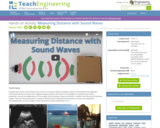
Students learn about sound waves and use them to measure distances between objects. They explore how engineers incorporate ultrasound waves into medical sonogram devices and ocean sonar equipment. Students learn about properties, sources and applications of three types of sound waves, known as the infra-, audible- and ultra-sound frequency ranges. They use ultrasound waves to measure distances and understand how ultrasonic sensors are engineered.

In this Cyberchase video segment, the CyberSquad must measure the length of the rope that will lower Digit from the ceiling to remove the voice box from a statue of Hacker.

A quick review lesson on how to measure mass for a scientific investigation. [1:35]

This video lesson [2:15] will walk you through using a ruler to measure the distance between endpoints. It is 2 of 10 in the series titled "Measuring a Line Segment." Students can take a short review quiz when finished. CCSS.Math.Content.3.MD.B.4 Generate measurement data by measuring lengths using rulers marked with halves and fourths of an inch.
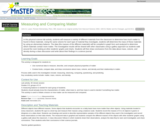
This activity is a lab investigation where students gather data about the masses of various solid objects found in a classroom. The students graph their data, compare their data, and draw conclusions about what kinds of materials contain more matter than others.

In this video from DragonflyTV, Tiana and Sammy measure, record, and analyze the results of a drop box test to find out how everyday items behave in microgravity.
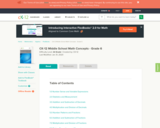
CK-12 Foundation's Middle School Math Grade 6 Flexbook covers the fundamentals of fractions, decimals, and geometry. Also explored are units of measurement, graphing concepts, and strategies for utilizing the book's content in practical situations.
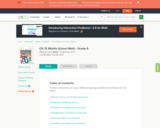
Provides teaching tips, information on common errors, differentiated instruction, enrichment, and problem solving for teachers to use with the CK-12 Middle School Math - Grade 6, Student Edition.
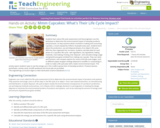
Students learn about life-cycle assessment and how engineers use this technique to determine the environmental impact of everyday products and processes. As they examine what’s involved in making and consuming cupcakes, a snack enjoyed by millions of people every year, students learn about the production, use and disposal phases of an object’s life cycle. With the class organized into six teams, students calculate data for each phase of a cupcake’s life cycle—wet ingredients, dry ingredients, baking materials, oven baking, frosting, liner disposal—and calculate energy usage and greenhouse gases emitted from making one cupcake. They use ratios and fractions, and compare options for some of the life-cycle stages, such as different paper wrapper endings (disposal to landfills or composting) in order to make a life-cycle plan with a lower environmental impact. This activity opens students’ eyes to see the energy use in the cradle-to-grave lives of everyday products. Pre/post-quizzes, worksheets, activity cards, Excel® workbook and visual aids are provided.

You can use shadows and a meter stick to measure very tall objects from the ground--and before you try this experiment yourself, see how it works with a Java applet that measures the height of a Tyrannosaurus Rex.